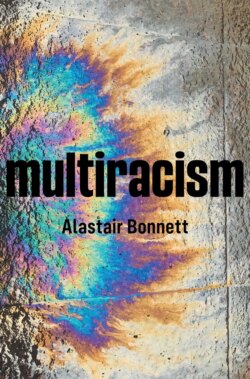Читать книгу Multiracism - Alastair Bonnett - Страница 12
Cairo (2017)
ОглавлениеI’m on my way to the ‘ghetto’ of a group of Coptic Christians called the Zabaleen, or trash-pickers. This is a community who have the job, unwanted by others, of taking in the city’s waste. Their so-called ‘city of trash’ is a forbidding place but also remarkable. In every doorway different materials are being pulled apart and broken up. Because of their work, Cairo has one of the best recycling rates of any city in the world. Egypt has many minority groups and a complicated relationship with its large Christian population. The Copts are subject to frequent attacks by Islamists; some, like the Zabaleen, are ghettoized and poor, but others form part of the country’s elite. A similarly uneasy but different relationship exists with another minority group in Egypt, the so-called ‘African migrants’, that is Black African migrants. I have a local guide with me as we walk past a group of middle-aged Black men in downtown Cairo. They are sitting outside a café playing cards and drinking mint tea. This is the first time since I arrived in the city that I’ve seen a group of Black Africans. My guide is oddly cagey. He is sympathetic towards the Copts but talking about these migrants, fellow Muslims, he’s wary: ‘they have their own schools but there are too many’, he says. Later I learn that the Arabic word for slave, ‘abd’, is still applied to Black Africans in Egypt, an indication of disrespect for the ‘Black south’.
